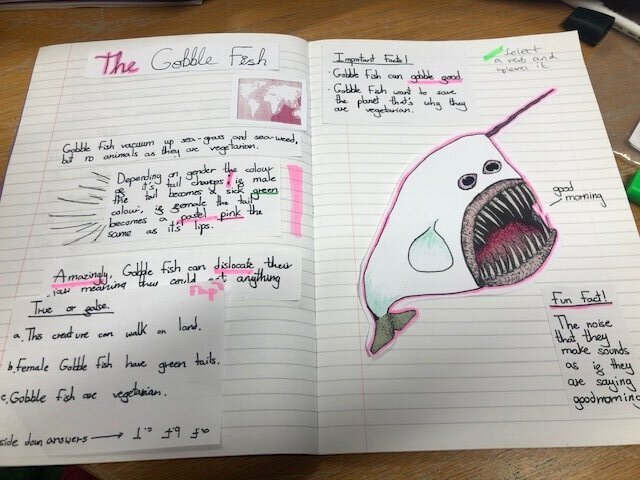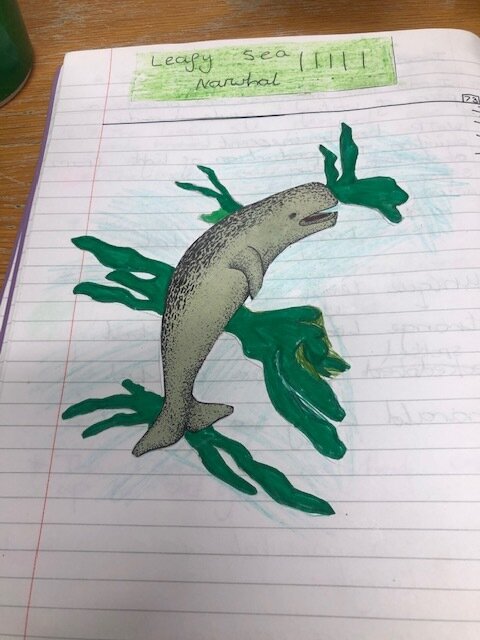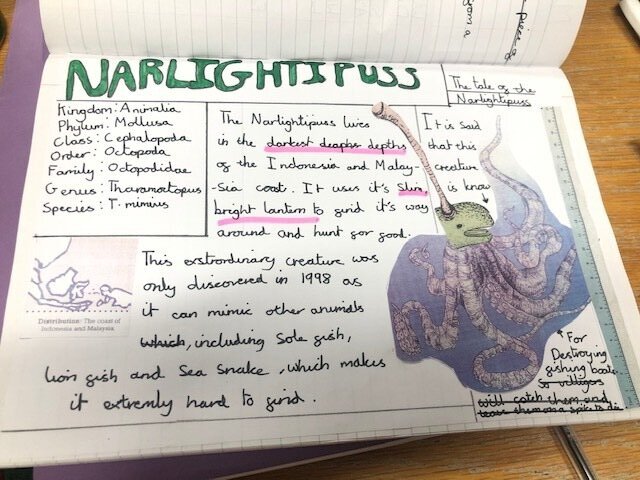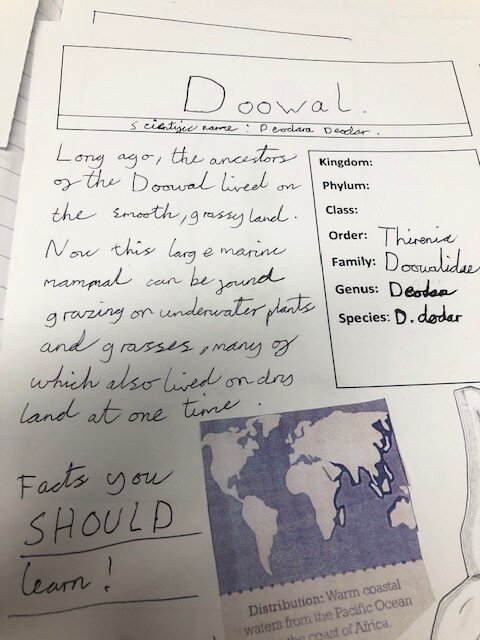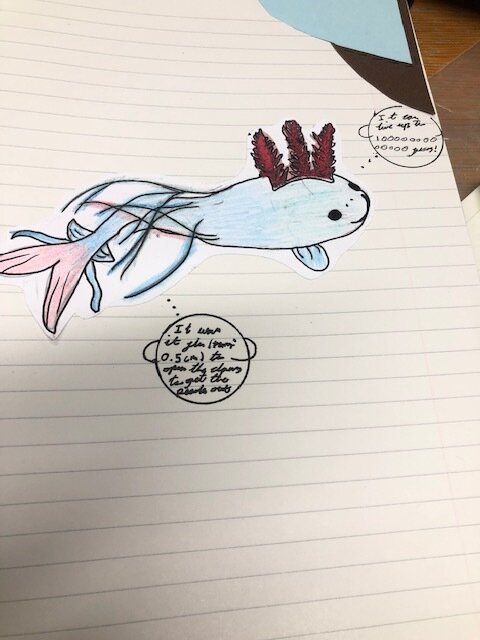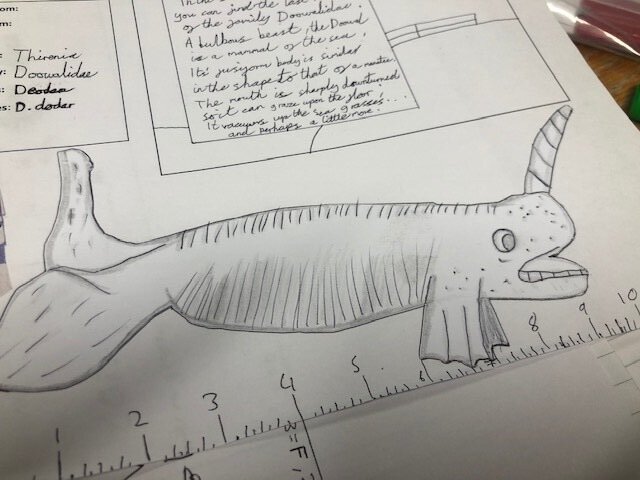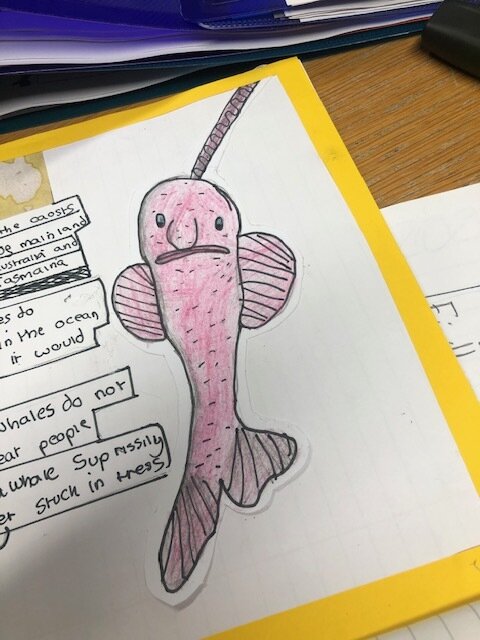Year 6 SATs Parents Meeting - 11 February 2020
What are the SATs?
SATs is a term people use to refer to End of Key Stage 2 Assessments;
It lasts for four days beginning on Monday 11th May 2020 and ending on Thursday 14th May 2020;
Children will sit the following SATs papers:-
Grammar, Punctuation and Spelling (Paper 1) – Monday 11th May 2020;
Grammar, Punctuation and Spelling (Paper 2) – Monday 11th May 2020;
Reading – Tuesday 12th May 2020;
Maths Paper 1 (Arithmetic) – Wednesday 13th May 2020;
Maths Paper 2 (Reasoning) – Wednesday 13th May 2020;
Maths Paper 3 (Reasoning) – Thursday 14th May 2020.
Writing is assessed using evidence collected by your child’s teacher throughout Year 6, so there is no Year 6 SATs writing test. There will be no Science sampling for Year 6 this year. Therefore, no Year 6 Science SATs Paper in 2020.
When and how are the SATs carried out?
The tests will take place during normal school hours, under exam conditions;
Children are not allowed to talk to each other from the moment the assessments are handed out until they are collected after the test has ended;
Afterwards, the completed papers are sent away to be marked externally;
The children’s results are sent back to school at some point in July;
The standard timings of tests differ but last no more than 60 minutes:-
Grammar, Punctuation and Spelling (Paper 1) – 45 minutes;
Grammar, Punctuation and Spelling (Paper 2) – typically 15 minutes;
Reading – 60 minutes;
Maths Paper 1 (Arithmetic) – 30 minutes;
Maths Paper 2 (Reasoning) – 40 minutes;
Maths Paper 3 (Reasoning) – 40 minutes.
Specific arrangements for SATs
Children with additional needs, who have similar provision in their day-to-day learning at school, may be allotted specific arrangements, including:
Additional (extra) time;
Tests being opened early to be modified;
An adult to read for them;
An adult to scribe (write) for them;
Written or spoken translations of the mathematics reasoning papers;
The use of prompts or rest breaks;
Arrangements for children who are ill or injured at the time of the tests.
Pupils with an EHC plan are automatically allowed up to 25% additional time (except for the spelling paper, which is not strictly timed). Pupils who use the modified large print or braille versions of the tests are automatically allowed up to 100% additional time.
Scaled Scores
All test outcomes at both KS1 and KS2 will be reported as scaled scores.
The national standard will be 100.
Raw scores (the number of marks awarded for each subject) will be translated to scaled scores (a comparable score for each subject) using a conversion table.
Pupils will receive a raw score, a scaled score and confirmation of attainment of the national standard.
Grammar, Punctuation and Spelling Test
There is a greater focus on knowing and applying grammatical terminology with the full range of punctuation tested.
Technical terms in grammar will be tested.
There will be one test paper for grammar, punctuation and vocabulary and one test paper for spelling. The design of the tests is unchanged.
The grammar test will last for one hour and there will be a total of 50 marks available.
In the grammar test, two thirds of the marks will be for multiple choice questions. The remaining questions will require pupils to write a longer answer.
Spelling
There are 20 spelling sentences.
The spelling words are tested within the context of a sentence.
As the sentences are read out to the children, they fill in the correct spellings on their copy of the text.
Sample spellings from previous years:
sharp
ravenously
whiskers
approached
surveyed
cautiously
lying
bristling
rigid
sensible
intruder
height
scattered
corridor
enough
proud
unique
straightened
doubt
coarse
Reading
The Year 6 Reading SATs paper will be sat on Tuesday 12th May 2020.
The assessment has been designed to measure whether children’s comprehension of age-appropriate reading material meets the national standard.
It a standard timing of 60 minutes, including reading the texts and answering questions. There are three different set texts for the children to read, which could be any combination of non-fiction, fiction and/or poetry.
The Reading paper focuses on the following areas known as Content Domains:
2a) give/explain the meaning of words in context;
2b) retrieve and record information/identify key details from fiction and non-fiction;
2c) summarise main ideas from more than one paragraph;
2d) make inferences from the text/explain and justify inferences with evidence from the text;
2e) predict what might happen from details stated and implied;
2f) identify/explain how information/content is related and contributes to meaning as a whole;
2g) identify/explain how meaning is enhanced through choice of words and phrases;
2h) make comparisons within the text.
The Year 6 Reading SATs paper requires a range of answering styles, including responding to multiple choice questions, one-word answers, and multiple mark questions which require more formal paragraph-length answers.
Maths
There will be three papers: 1 arithmetic paper ( 30 mins) and 2 mathematical reasoning papers (40 mins).
A written arithmetic test to assess fluency with numbers and basic mathematical calculations, with a focus on working efficiently at speed.
The test covers all objectives from Year 3 to year 6
Calculation methods
Questions in the arithmetic test will cover:
ability to work fluently with numbers
straightforward addition and subtraction
more complex calculations with fractions
long division and long multiplication
Arrangements for test day
The tests will take place in the hall and other available spaces.
Tests are kept securely in a locked cupboard until test day.
Children are allowed to ask for questions to be read aloud to them (with the exception of the reading test).
Staff may only read the question – children are not allowed any help with spelling or to ask for clarification.
Children have the start and end time for each test displayed and are given reminders at timed intervals which they are used to as part of our test preparation sessions.
SATS Breakfast Club
After the tests
Once the test has finished, the test scripts are collected in silence and handed to Mrs Taylor who places in envelope ready for collection by Parcel force. Tests are marked by external SATs markers.
During test week, the afternoon sessions may be used for revision.
When will parents be informed of pupils’ results and who else will use these results?
Parents will be informed of their child's results during July.
They will be sent electronically to secondary schools.
Should my child be revising at home?
We will expect your child to do some revision and test papers at home and this should be encouraged to enable your child to feel as confident as possible going into their tests.
However, the best idea is little and often. Where possible children should be able to use revision websites.
What should I do if I’m worried about my child?
Steps to take:
Talk to the school
Is your child showing the same symptoms at school as they are at home? Is there anything else going on at home which may be contributing to your child’s overall level of stress? Work with the school so everyone concerned can be offering the support that’s needed.
Spend time with your child
Try to understand what aspect of SATs concerns them most. Is it the worry of ‘failing’? Is it the worry of getting stuck on a paper? If your child can pinpoint what’s bothering them most, you can take specific steps to help reassure them.
Try not to project your own anxieties or views on the SATs
If you don’t believe in SATs, or do not think your child should be doing them, then neither will they.
Confront any media coverage
Show clippings if there’s been anything negative and ask them to talk about what they've seen and how they feel. Reinforce the reality.
Encourage your child to talk to their teacher
SATs are obviously linked to school, so don’t be surprised if they favour the reassurance of teachers above family members.
Finally…
Whilst we do encourage your children to take these tests seriously and use them to show off all that they are capable of; it is important to remember that all the children in Year 6 are special and unique, irrespective of a test. The value and worth of each child cannot be quantified by a test and nor should it.
The Lost Words - an art project
As a school, we have been redesigning and improving our curriculum. It is an important part of ensuring the education that we are providing for our children is interesting and relevant, as well as meeting the National Curriculum objectives and showing progress in terms of the skills that children are learning and using.
Jayne Stillman, County Inspector/Adviser for Visual Arts came to meet with myself (Curriculum Lead), Sharon Taylor (Headteacher) Liz Jones (Art Lead) and Becky Stanley (PPA Teacher) and we started to design an art week. All of this proposed work hinged on the text The Lost Words by Robert Macfarlane and Jackie Morris. We used the book as our inspiration and then thought about the skills and experiences of our children in order to bring this book to life through various different mediums. All of the children learned five facts about the artist Jackie Morris and enjoyed the book, before developing their ideas for their artistic specialism.
Shortly after this initial meeting, Jayne Stillman came back to school to meet with us as a whole staff, to deliver a twilight training session. It was interactive and inspiring. It made sure that all of us knew how the subject of art worked and how to develop our own skills appropriate to what we are teaching. We established that during art week we wanted to cover all of the skills (drawing, painting, collage, printing, sculpture, textiles, art and ICT). We also wanted to make sure that our children were learning about artists and the visual elements (colour, pattern, texture, line, shape, form and space).
During art week there was a real buzz around the school. The children were enjoying all of the hands-on experience and that they got to see an artistic project through from beginning to end. Teachers enjoyed displaying the artwork that their classes were producing and it was a real pleasure to wander around the school and see this in action.
Year R
Early Years focused on insects. Their high- quality outcome was a piece of collaborative art – a giant collaged caterpillar! All of the children joined in with the work, and it is still on display now! A real memory for them to treasure.
Year 1
In Year 1, their focus was on leaves. They completed sewing as well as observational drawings involving chalk and charcoal to show the difference in tone.
Year 2
In Year 2 the children completed 3D sculptures of flowers using pipe cleaners and natural resources. They also made observational drawings and then used different media to paint their sketches; the children used oil pastels and watercolours to do this.
Year 3
Year 3 enjoyed their theme of birds. They also completed a large-scale collaborative piece of art involving zen-doodling, inspired by the artist Johanna Blasford.
Year 4
Year 4 made small 3D sculptures of trees from wire. This developed their fine motor skills and attention to detail that is required in both observational drawings and then creating sculptures using those sketches.
Year 5
Year 5 used watercolours to create landscapes involving their theme of water, and they also made small fish sculptures out of clay. They explored the elements of pattern, texture, line and shape in order to make this successful.
Year 6
Year 6 used elements of collage and painting to create a mixed media piece on their theme of hedgerows. They were also lucky enough tohave a visit from a local artist who discussed how their patterns and artistic designs could then be transformed into actual items for sale. This related the children’s artistic knowledge and experience to the real world around them.
Our end goal was to create high-quality art that could go on display during Stanmore’s 90th birthday celebrations! The artwork that was on display set the scene for our celebrations. They have also helped to create high-quality and interesting displays for our school moving forwards.
Jayne helped us to outline a really positive week for our staff and children and helped us to develop our own skills and knowledge in relation to the art curriculum. Which in turn has helped us to demand high expectations of all children in all areas of the curriculum.
Claire Evers
Curriculum Lead Stanmore Primary School
Poetry week: 27 - 30 January 2020
“Poetry is the rhythmical creation of beauty in words”.
This week, poetry led the learning across KS1 and KS2. Unlike the writing journeys we usually teach where grammar, spelling and punctuation are a focus, we allowed the children to respond to unknown words and share their opinions. Certain poems also allowed children to see how punctuation can be used differently but still be effective.
All children listened to a range of poems based on the theme of ‘Change’: change of seasons, change of feelings, change of countries or change of habitats. The poems taught in Year 5/6 focused on the change or transformation of human to a mystical creature which really got us all thinking!
The children thoroughly enjoyed hearing and learning new vocabulary, using their senses to write their own poetry and performing poems with their friends. They all worked incredibly hard!
Year 4 - Multiplication Times Table Check
On the 5 February 2020 the school held a meeting for parents of children in Year 4 to explain about the new Times Tables Check that starts this year. The content from the meeting is reproduced here for reference.
What is the purpose of the check?
To determine whether year 4 pupils can fluently recall their multiplication tables.
To help schools to identify pupils who require additional support.
There is no ‘pass’ rate or threshold.
The DfE will create a report on overall results across all schools in England to measure improvements.
When will the check be carried out?
There will be 3-week window in June for the administration of the check.
There is no set day to administer the check.
Children are not expected to take the check at the same time.
All eligible year 4 pupils England will be required to take the check.
How will the check be carried out?
The check will be fully digital and take place on screen.
Children will be able to use laptops, desktops and tablets.
Answers will be entered using a keyboard or by pressing digits using a mouse or touchscreen using an on-screen number pad.
Under standard administration* the multiplication check will take less than 5 minutes per pupil.
Children will get 6 seconds from the time the question appears to input their answer.
There will be 25 questions with a 3 second pause in-between questions.
Specific arrangements for the check.
Children with additional needs, who have similar provision in their day-to-day learning at school, may be allotted specific arrangements, including:
Colour contrast;
Font size adjustment;
‘Next’ button (alternative to 3-second pause);
Removing on-screen number pad;
An adult to input answers;
Question reader;
Audible time alert.
The Questions
Each pupil will be randomly assigned a set of questions.
There will be repeated questions across different checks each year, but no more than 30% of questions will be repeated in any two checks.
Children will only face multiplication statements in the check (not related division facts).
Pupils will not see their individual results when they complete the check.
During the check
There will always be questions from the 3, 4, 5, 6, 7, 8, 9, 11 and 12 multiplication tables in each check.
There will be no questions from the 1 times table (i.e 1 x 8 or 8 x 1).
The 6, 7, 8, 9 and 12 times tables are more likely to be asked.
There will only be a maximum of 7 questions from the 2, 5 and 10 times tables.
Reversal of questions will not feature in the same check.
Multiplication Table limits
The STA state that they are classifying the multiplication tables by the first number in the question. For example, 8 x 3 would fall within the 8 times table.
Questions more likely to appear
The following 11 multiplication questions are more likely to be asked:
6 x 6, 6 x 7, 6 x 8, 6 x 9, 6 x 12
7 x 8, 7 x 9, 7 x 12
8 x 9, 8 x 12
12 x 12
Before the check
Children can practise before taking the check
There will be a ‘try it out’ area the children can use to become familiar with the timings and layout of the check.
How does the school teach times tables?
Teaching times tables facts first:
Counting and looking for patterns
Repeated addition
Multiplication is commutative
Multiplication is the inverse of division
Number families
Use of different representations
Concrete manipulatives such as counters or multilink cubes
Pictorial representations such as arrays
How can I support my child with the times tables check?
Firstly, a positive attitude goes a long way – so as much encouragement and support as possible (but we don’t need to tell you that)!
Some further tips:
Make times tables fun;
Climb stairs counting in multiples
Play verbal times tables games
Listen to and learn times tables songs
Take it in turns to say different times tables in funny voices (i.e. say 2 x 3 = 6 in a lion’s voice)
Play online maths games
Talk directly to your child’s class teacher if you have any worries (try not to worry your child);
Encourage your child to talk to you, their teacher, or another adult they trust, if they express persisting anxieties about the check. Remember that a small amount of anxiety is normal and not harmful.
Use Times Tables Rock Stars – the log in is at the front of your child’s reading diary.
Remember these facts
The check will focus on what they know about times tables
It won’t reflect their understanding of wider mathematical topics.
The check is only 5 minutes long
For most children, the check will last for a maximum of 5 minutes. When they have finished, they will not need to repeat the check, regardless of their final score.
Useful links
Stanmore Post - 7 February 2020
Dear Parents,
An important part of our school curriculum and our wider work within school, includes our aim to support all children to be confident, resilient and independent, and to develop strength of character. As you will be aware, at Stanmore we use the ‘Keys for Success’ to provide a framework for this. Our Keys represent six learning behaviours: Co-operation, Respect, Resilience, Persistence, Organisation and Confidence.
Each week, we look for ways to promote, recognise and celebrate these learning behaviours. Sport is a fantastic way for children to develop strength of character using our Keys for Success. As part of our ongoing work to achieve our Silver school games award; this week a team of Year 5/6 children have taken part in a Winchester and Eastleigh Cross Country event. Two of our children: Seth Noott and Thomas Megoran came within the top 20 and will now proceed to the District Cross County Competition. Congratulations. Stanmore Primary School will also host a Winchester Schools Rugby event later this term.
Best Wishes
Sharon Taylor
Elm class create their very own unusual creatures
This is some of the fantastic work Elm class have completed this week. Using various parts of creatures, Elm class were asked to design their own weird creatures. With the creature, they then had to use similar language, layout and humour found within your text to write their own entry.
They absolutely loved doing this! So we wrote to the author of the book that inspired us to say, “Thank you for creating such an amazing book, which has allowed these 10-11 year olds to see that writing non-fiction can be fun!”
We were super excited when he replied:
“This is the best! Thank you for sending. I especially love the Israeli blowhoaltopus! And the narlightapus, which can crush fishing boats. Haha. You have some amazingly talented kids in your class, and I definitely see some budding authors and illustrators.”
Friends of Stanmore - waterproofs, labels and a quiz
The Friends were super proud and excited with the purchase made this week! Year R received a class set of waterproof outdoor wear to help extend their outdoor learning opportunities. The teachers and children were delighted with their new equipment and it was all done with the amazing support we receive from all of you parents!
You may have noticed the new posters on our notice board this week, the FoS have created a new partnership with ‘Stikins’ name label company, more information should appear in your children’s book bags next week :)
Lastly, please let me remind you about our upcoming adult quiz night on Friday 6th March, we are aware you may need babysitters or time to get up-to-date on your quiz question knowledge :) we hope to see many of you there!
We hope you enjoyed your extra day at home with your children
Many Thanks,
Rachel, Hayley, Jen and Amy
Cross Country Running
On Wednesday 29th January, children from KS2 participated in a cross-country event at Knightwood Leisure Centre, Eastleigh.
The children running were very resilient, despite the muddy field, the distance and the cold conditions; they persevered! It was such a pleasure to see them support each other by either cheering from the side or running alongside their peers.
Miss Kelly and I were so pleased to see the number of children who attended and who represented Stanmore Primary in such a positive way. We were so proud of all of them for running a long distance and we are even more delighted to have seen Seth Noott take 1st place and Thomas Megoran take 3rd place in the boys’ race.
We are now looking forward to Thursday 6th February, when the cross-country team will compete for a chance to enter the district championships!
Stanmore Post - 31 January 2020
Dear Parents,
In our English Curriculum this week there has been a focus on Poetry. We are giving children the skills that they need to master reading but we also aim for them to love reading and be able to select books based on an understanding of what makes an enjoyable read. Enjoying the rhythm, rhyme and use of language in poems is a really effective way to promote this. Through poetry, the children are encouraged to make choices and engage in reading. Children across the school have been enjoying talking about their responses to the poems, and exploring their likes, dislikes and how the poems make them feel. Throughout the school I have heard children learning, reciting and performing poems.
If you would like to share any of these poems with your child/ren, these are some of those used during the week.
Year 1/2
‘Out of the Fire, a Spark’ by Michaela Morgan
Spring’ by Deborah Alma
‘The Seedling’ by Paul Laurence Dunbar
‘Child’s Song in Spring’ by E. Nesbit
‘Caterpillar’ by Christina Rosetti
‘Snow Fox’ by Liz Brownlee
Year 3/4
‘He Thinks of his Past Faces’ by John Canfield
‘Fire’ Read aloud by Brian Moses
‘The Way Through the Woods’ by Rudyard Kipling
‘Shadow Boy’ by Kate Wakeling
Year 5/6
‘Front Door’ by Imtiaz Dharker
‘Becoming the Eagle’ by Jan Dean
‘Chameleon Kids’ by Matt Goodfellow
‘Instructions for Not Becoming a Werewolf’ by Abigail Parry
Next week, parents are invited into school to find out more about the Early Years Curriculum and the Year 4 Multiplication Times Tables Check. Miss Evers will explain more about the purpose of the multiplication check, which will be used to determine whether Year 4 pupils can fluently recall their multiplication tables. Miss Day will also be explaining more about what is involved in the Early Years Foundation Stage Curriculum. Parents are welcome to come into school to find out more on Wednesday 5th February at 2:45pm and 6pm. The meetings will be held in Sycamore and Catkins Classes.
Recently we were successful with an application to the Local Schools Nature Grant. We were one of 100 schools chosen, from 1572 that applied. As a result, we have some fantastic outdoor equipment for ‘loose parts’ sculpture and den building. Children in Catkins will begin using this next week and will start to invite other classes to join them at lunchtimes for outdoor learning and play after half term. Have a look at our photos from our excellent training session led by Learning through Landscapes.
New equipment to help out outdoor learning
Recently we were successful with an application to the Local Schools Nature Grant. We were one of 100 schools from 1572 that applied. As a result we have some fantastic outdoor equipment for ‘loose parts’ sculpture and den building. Children in Catkins will begin using this next week and will start to invite other classes to join them at lunchtimes for outdoor learning and play after half term. Have a look at our photos from our excellent training session led by Learning through Landscapes.













